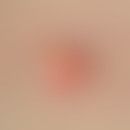DefinitionThis section has been translated automatically.
A conditional mutation causes an altered phenotype - but only under certain conditions (conditions). One common condition is temperature. Thus, in an affected organism, an enzyme protein is formed that changes only at a certain temperature. Example: This is the case, for example, with certain breeds of rabbits. They have a mutated gene that controls the growth of black fur. However, the enzyme formed is inactive at higher temperatures. As a result, affected rabbits have a light coat coloration due to their warm body temperature. Only the colder extremities bear a black coat color.
A conditional lethal mutation is a feedback mutation in which the resulting change in the gene product only becomes apparent as a lethal effect under certain growth conditions.
General informationThis section has been translated automatically.
A mutation is a permanent change in the genetic material. The following types of mutation are distinguished: gene mutation, chromosome mutation, genome mutation. Mutations can occur spontaneously e.g. during DNA replication or meiosis. Mutation can also be induced e.g. by mutagens.
Factors outside the cell (mutagens), can also cause mutations. These are, for example, high-energy radiation, such as X-rays or UV radiation, as well as certain chemical compounds or special viruses. However, it cannot be predicted where exactly in the genome the mutations occur and how many. The following inheritance patterns are known:
- Somatic mutation (restricted to somatic cells only)
- Germline mutations (the mutation is passed on to offspring).
The following forms of mutations are distinguished:
- silent mutation
- neutral mutation
- loss-of-function mutation
- gain-of-function mutation
- conditional mutation
- lethal mutation
LiteratureThis section has been translated automatically.
- Gierut JJ et al (2014) Strategies to achieve conditional gene mutation in mice. Cold Spring Harb Protoc 2014:339-349.



